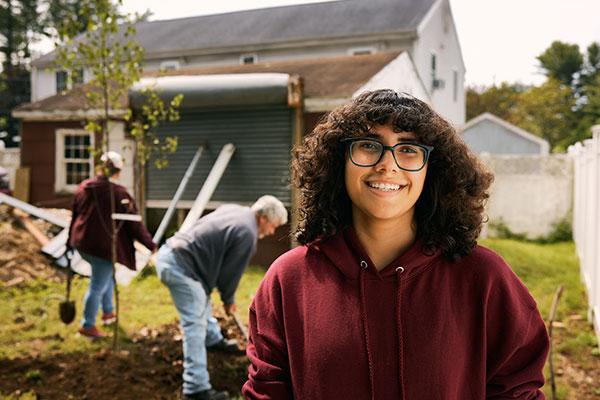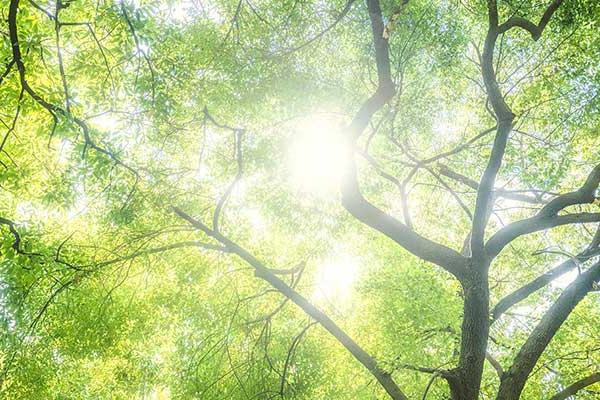“The same communities that are lacking trees and green infrastructure, oftentimes because of historical redlining, are also missing park space or the opportunity to connect with green space,” Lauren added. These continue to be the spaces in Grand Rapids that need trees most.
Connecting With the Community, Inspiring the Next Generation
The neighborhoods identified as priority areas for tree planting are also parts of the city where residents have often been more hesitant of municipality work and tree planting. “There is a decades-long history of a lack of trust,” Lauren said. To help build that trust, he and his team focus on connections.
Often, this means showing up again and again — being a recognized face among neighbors. (Lauren has been identified most often as “that tree guy.”) It also means listening, even if what residents are sharing is that they don’t want a street tree in front of their house.
Involving residents in work happening in their own neighborhoods is also important. One way Friends of Grand Rapids Parks does this is through the Youth Green Team. All the trees being planted need to be watered, so high school students are hired each summer to do the watering. “We do our best to hire folks from the neighborhood where we’re doing the work,” Lauren said.
Last summer alone, the Youth Green Team cared for 1,000 newly planted trees. That’s a lot of 5-gallon buckets of water. It’s also a lot of trees set up to survive their first year in the ground.
And as the Youth Green Team waters the trees to improve their neighborhoods, the neighbors come out to appreciate their hard work. One homeowner — adamant that he didn’t want a tree added to his yard — brought out sports drinks on a hot day. Another insisted they take a break to enjoy breakfast in her backyard.
The work is hard for a teenager, but the pay is good and the experiences can be life-changing. In addition to watering, the team gets the chance to learn more about nature, forests, conservation, and even potential career opportunities. For some, this has been truly inspirational. “We’ve had multiple members of the Green Team who decide, ‘Hey, I’m doing this tree stuff now. This is what I’m going to college for.’ When they met us, they had never had these conversations before,” Lauren said.
One of last summer’s team members invited staff to attend her quinceañera. For the team, this is a favorite memory. “During the ceremony, the priest mentioned how the team’s guidance and mentoring shaped her passion for a future in forestry. Her dress was green and there were leaves decorating the room. And it was just like, man, I got all the feels.”
The Power to Create Change
These are moments that matter. Connections that will last a lifetime. Bridges being built within the community so all residents can enjoy the benefits of a greener future.



